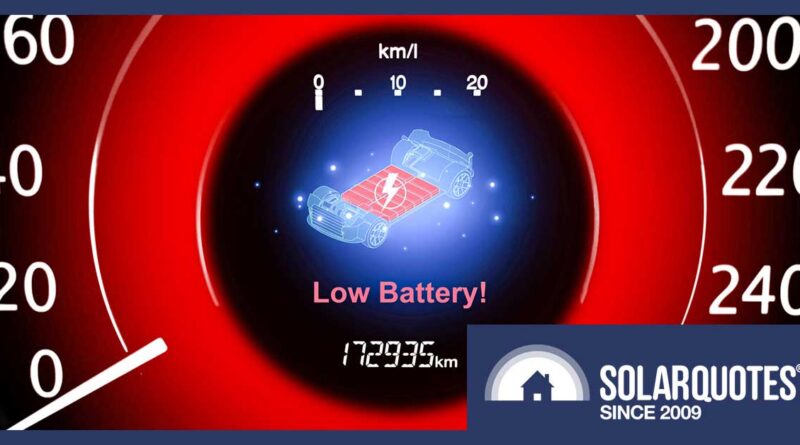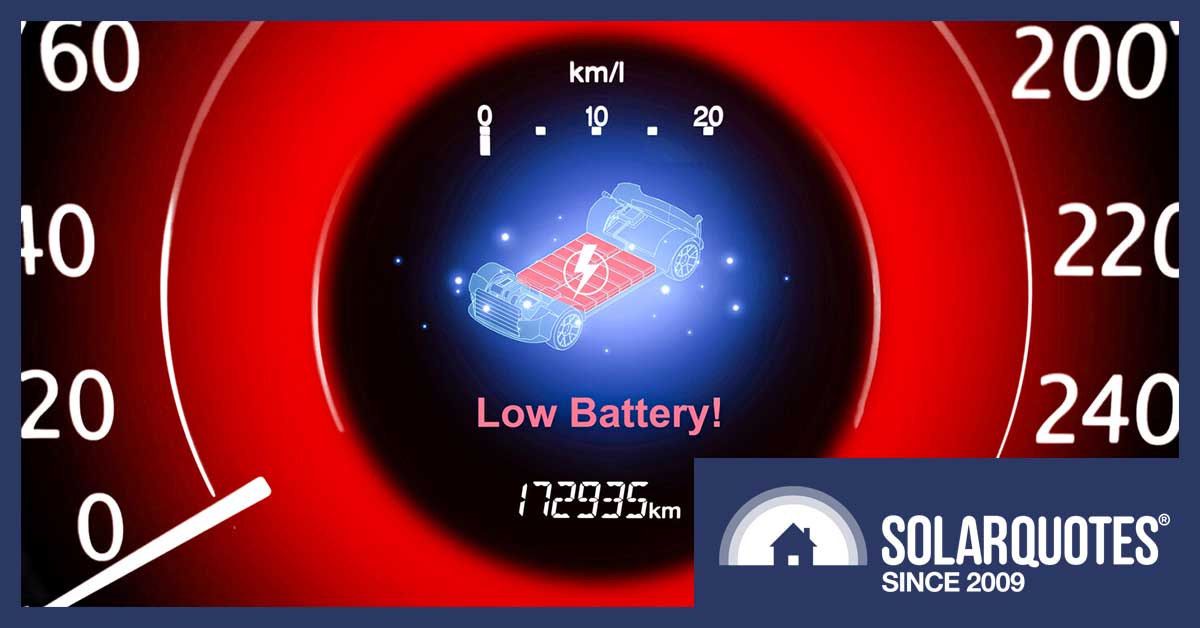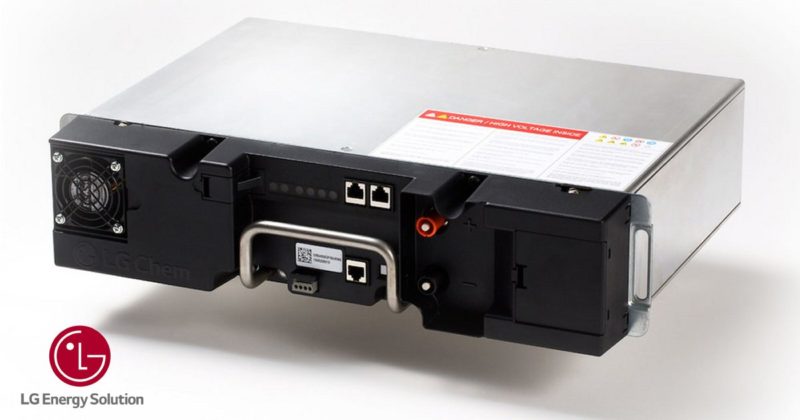Why Your EV Charger Matters More Than You Think
I recently answered a query from an excited soon-to-be EV driver looking to set themselves up with the necessary gear for electric car charging.
The Myth Of The “Ideal” EV Charger
At first blush, it seemed like a question I would ask myself. When I go shopping it’s often a case of why are these fully featured things so damned expensive; or why don’t they make this item, with these specific functions, at all?
The missive read like this:
“Brilliant work with the role solar quotes provides. I have been referring to it a lot over the years. You have a great gang of writers who knows their subject and provide sound advice.
As I anticipate the arrival of my model 3, I’m trying to get a charging solution. What I realised would be a good mobile solution is a mobile charger that can plug into 240V, but with a removable type 2 cable that can be just a type 2-type 2 cable for use at public chargers without a cable. Is there such a mobile charger on the market?
The Fronius Wattpilot Go ticks the boxes, as well as being a smart charger for 3 phase home supplies, but adding that to a type 2-type 2 cable comes in at $2200. Whereas, the Tesla mobile charger, a separate type 2 cable and the wall charger comes in at $1600.
Even though I have a fronius 3 phase inverter and fronius smart meter, the economics don’t make sense for the Watt Pilot.
The details in the Tesla manuals are a bit vague but I gather I can only program 1 schedule into the wall charger/ car app, the example in the manual says overnight scheduling for off peak power. Ideally, and what the Watt pilot can do is charge with surplus solar from my PV. But the $/kWh savings are unlikely to bridge the purchase cost of the Watt pilot. I’m just mentioning this is case you or your team decide to do another blog on EV charging.
Ideally a mobile charger with removable type 2 cable would be the best option to carry in the boot. I just can’t find one on the market.”
Thanks for the compliment; we’re always chuffed that people find value in what we do. However, many of us often get lost in the labyrinth of options, comparing features, weighing options and stressing over prices.
My Dad always said, when he bought the most industrial tool he could afford (instead of the handyman version): it’s not about saving a few bucks today; it’s about spending wisely for the future.
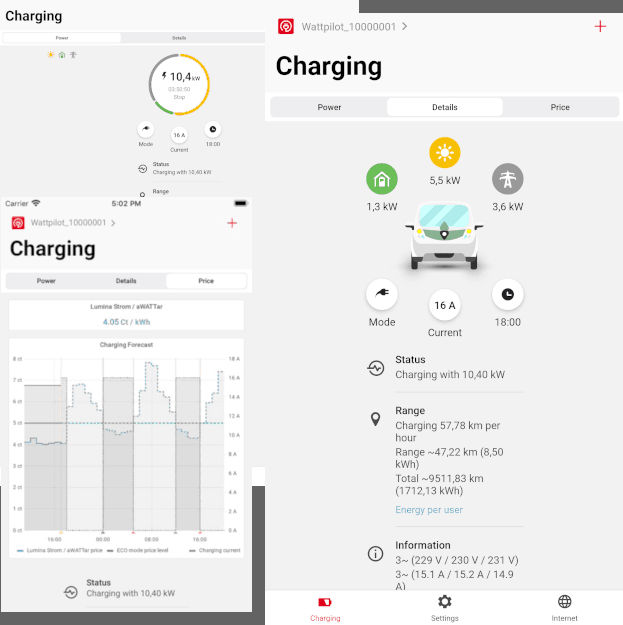
Rich in detail, the Fronius Wattpilot electric car charging app can control for solar energy harvesting or time of use for best pricing.
What Misses the Mark
I’m talking about tools because as an electrician I’m stuffed without them. I have a dozen cordless machines that are all rendered useless if I break the charger, or leave it on the last job site 100km away. So I bought a radio that also charges batteries, for redundancy. You want a decent quality lead and it has to be reliable.
So we’re looking for an EV charger that can plug into 240V, offers a removable type 2 cable, and ideally, provides smart charging features. Let’s address the elephant in the room: it should be cheap.
Having scoured a few sites like Jetcharge, EVSE.com.au and evchargers.com.au for homework — charger price comparison, compatibility, smart features, and so forth, it’s boiled down to the Fronius Wattpilot Go versus the Tesla Mobile Charger. The latter is cheaper and dumber, so I’ll argue buying that is somewhat short-sighted. Here’s why:
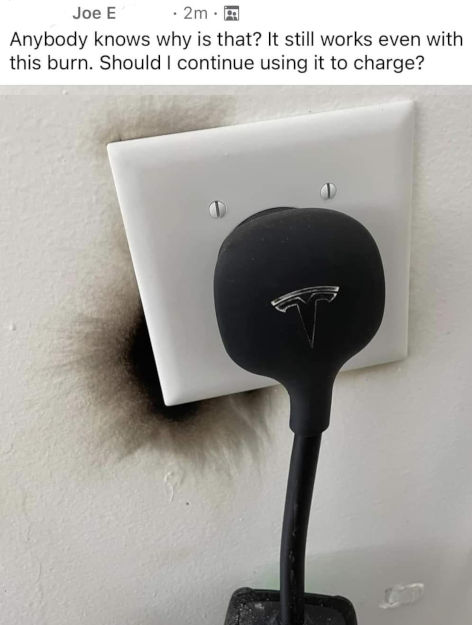
This is a US spec 220v wall plug, and NO you should not keep using it Joe.
Redundancy Is Reliability
SolarQuotes founder Finn has gone through two EV charging cables in three years. Having a backup is not just a luxury—it’s a necessity. Imagine one cable gets pinched, or the car isn’t charging, and you need to quickly diagnose if it’s the cable at fault. With a spare cable in the boot, you can diagnose a faulty cable immediately and also prove to the vendor that you need a warranty replacement.
In terms of smarts, solar surplus charging is great on general principal, even if it seems to be a long payback. And I wouldn’t advise anyone to buy a charger that doesn’t have OCPP communications for reasons we have spelled out previously.
Fronius Make A Great Integrated EV Charging Package
You’re about to own a not-so-cheap electric car. If you already own a Fronius inverter for your solar installation then you’re well into this ecosystem, which has an award-winning EV charger and a unified monitoring platform. Getting a Fronius Wattpilot Go isn’t just another expense—it’s an investment in a seamless charging experience.
It doesn’t have to be Fronius, but having a compatible system just makes more sense than disparate parts cobbled together.
My recommendation (depending on your garage setup) is to have a long EV charging cable at home to reach beyond your normal parking space and a spare in the car, to ensure you’re never caught out. It saves you time winding up a cable every day, the stress of forgetting it, and potentially money in the long run.
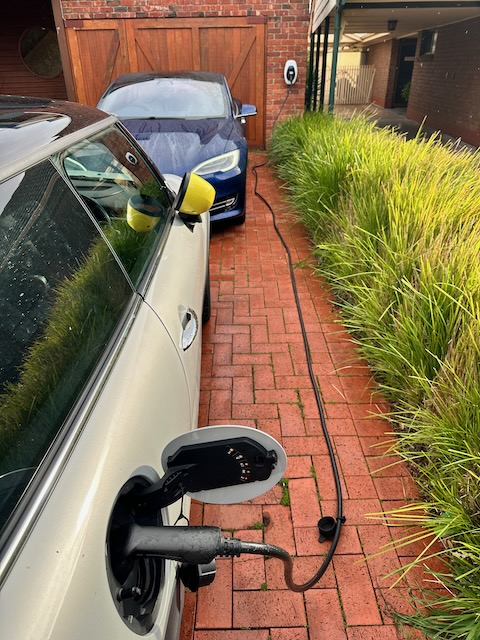
This driveway needs a 10m cable to charge the mini when it is second home.
Your Electric Car Is Useless With a Flat Battery
So, the economics might not seem to favor the Wattpilot when pitted against the Tesla EV charger. But you’ve already invested heavily in both a Fronius solar system and a rooly noice electric vehicle. The Wattpilot isn’t just another charger—it’s the link that unifies your whole home energy system.
Trying to save a few hundred dollars today could leave you stranded tomorrow. Or worse, it might require you to spend more than you “saved” on emergency towing. In the grand scheme of things, paying a premium for a product that offers both reliability and compatibility with your existing setup seems like a no-brainer.
Let’s not forget that the Wattpilot offers the option to charge with surplus electricity from your solar power system —something the Tesla unit can’t do. While the dollar per kWh savings may seem minimal now, consider the long-term gains. With Time-of-Use rates proliferating and dynamic network control changes mooted, having a smart charger could be more economical than you think.
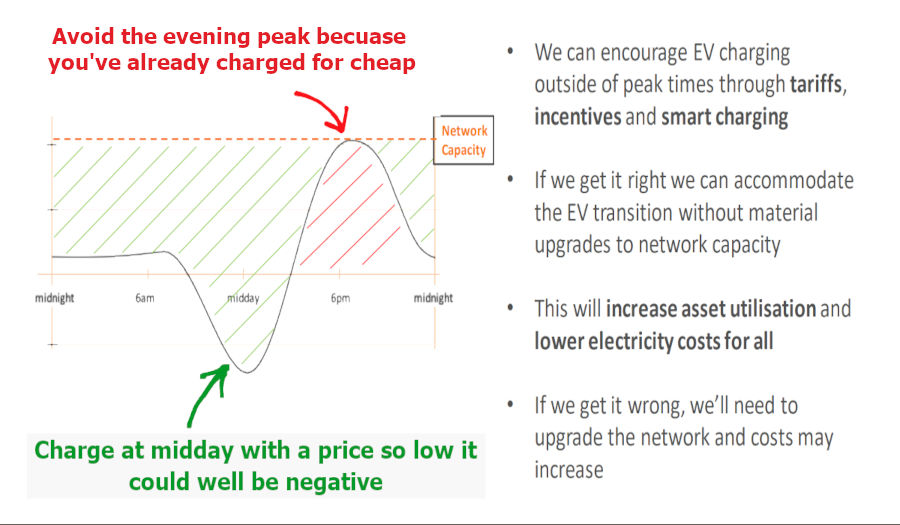
Daily grid demand is what drives electricity price when you have a TOU retail account, besides which the networks will likely want to curtail demand during the evening peak.
So, For My Money…
If you’re revving up to welcome your new EV, remember: quality and reliability shouldn’t take a backseat to cost-saving measures. You’ve already invested in cutting-edge technology, so why cut corners to keep it all running?
While there’s no one-size-fits-all answer, look beyond just the price tags and features, because at the end of the day, an electric car is only as good as its charger.
Original Source: https://www.solarquotes.com.au/blog/ev-charger-selection/

